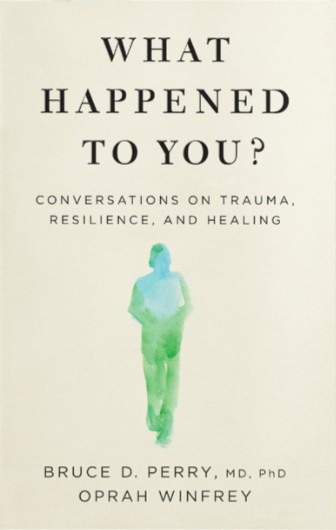
As the New Year starts we think about new beginnings. We think about change. But whether you are business owner, a senior executive or a junior marketer you are likely to face the same challenge of a lack of time to do and achieve everything you want. So here is a selection of time management techniques and ideas I have gleaned over the years during my time as a director, a consultant and an executive coach.
Each person is different and you should pick and choose those techniques that suit you best rather than struggling with an approach that you don’t get on with. However, it’s often a good idea to try something new as if you continue to do the same things in the same way, you will continue to obtain the same results. The critical thing is for you to take control of your time.
1.Action priority matrix We love matrices in marketing. This one charts effort on one side and impact on the other. Then you can identify the quick wins (low effort, high impact), the fillers, the hard slogs and the major projects (high effort, high impact). It’s a quick and easy way to prioritise your activities.
2. Analysis Most professional people record their time for billing purposes. However, they are less likely to record and analyse time that is not chargeable – and it is here where time management needs to improve. Spend a couple of weeks recording all of your time to see where it is being used. Then you can start to remove the time-wasters and allocate time for the things that are important.
3. Assertiveness Sometimes people find themselves unable to say “No” and so take on too many tasks that they are not really supposed to do. Developing assertiveness skills so that you can politely decline or redirect requests will save you valuable time. Assertiveness skills – getting what you want and saying “No” (kimtasso.com)
4. Assistants Senior people are likely to have assistants who they keep rather busy. But it’s worth taking the time to chat to your assistants regularly about how they think you can save time – either by organising things differently or getting the assistants more involved in some activities. See the comments about delegation below.
5. Boundaries When I was a director I worked very late most evenings which resulted in 60 or 70 hour weeks. When I had my first child I had to set some boundaries. I forced myself to leave the office at 6pm on three evenings a week so that I could spend some time with my son. I found two things happened. The first was that having communicated my boundaries to people, they respected them and ensured that meetings and other activities didn’t cross them. I also learned that I was more effective at getting things done when I knew I had to leave the office at a specific time.
6. Contingency time There are always crises. The best way to manage them is to schedule regular short time slots in your calendar to tackle them, if and when they occur. And if there is no crisis then you have the time available to tackle your planned work.
7. Delegate If you are in the fortunate position of having people in a team then you must learn to delegate work to them. This usually requires an upfront investment of time to provide them with the necessary learning, development and supervision support. So initially there is a bigger demand on your time. But it is worth it in the long run. There are several blogs on delegation (see, for example Delegation for leaders – a how to guide (kimtasso.com))
8. Dictate These days everyone types their documents. However, there are some excellent technology solutions that enable you to dictate your material – and often when you are on the move or in a place where you can’t use a keyboard. This can save you a lot of time and may enable you to use otherwise “dead” time.
9. Eat the frog Sometimes we procrastinate. We put things off and/or avoid them. One approach is to do the unpleasant task first – to “eat the frog”. Alternatively, commit to spending just 15 minutes on an unpopular task – just so that you get started. You may find that once you start you just keep going. Alternatively, within 15 minutes you may be able to gain a better insight into the task and prepare a breakdown of actions to complete it at a later date.
10. Email Whilst it is, of course, vital to be responsive to clients, the constant pinging of emails into our inbox can be a drain and a distraction. Turn off the alerts and try to arrange your time so that you review your inbox on a regular basis. But ensure that your clients know how to contact you in an emergency – perhaps by encouraging them to text or call your mobile. You can also organise your inbox so that only emails addressed specifically to you appear in the main inbox and where you are cc’d they go elsewhere. Many organisations are changing the way people use internal emails – preferring collaborative software such as www.yammer.com or Slack for general communications to avoid frequent round-robin emails.
11. Environment Some people work best in a tidy environment – whereas others like to be immersed in their disarray. Some people need peace and quiet while others prefer a hum of activity around them. Learn what sort of environment suits you best and aim to create that atmosphere.
12. First time action A good tip when working through your emails is to only read each email once. Then you must either action it, file it, forward it, delegate it or delete it. Re-reading emails takes too much time and a cluttered inbox is demotivating.
13. Flow Flow (also known as “being in the zone”) was described by Mihály Csíkszentmihályi as the mental state of operation in which a person performing an activity is fully immersed in a feeling of energized focus, full involvement and enjoyment. It is characterized by complete absorption in what one does which means that you must be uninterrupted. Use quiet time slots to allow yourself to get into your flow. And note that multi-tasking destroys flow.
14. Free day exercise Sometimes, I ask my clients what they would do if they had a whole day clear. If they struggle with identifying how they would fill that day then I know that they need to spend some time thinking about their work and identifying some specific goals and getting a bit more organised about their priorities.
15. Goals and priorities The best time management happens when you are really clear about your goals. And there shouldn’t be too many of them. Then you can formulate plans as to how you tackle those goals. Then if it isn’t in the plan, then you don’t do it.
16. Good enough It’s natural that you should always want to do your best. However, some people (the perfectionists) spend too much time making final minor adjustments. You need to recognise that often “Good enough is good enough”. The Pareto principle also operates – 80% of the results can be attributed to 20% of the activity.
17. Home working Some people find it easier to work at home, particularly if the work needs a lot of quiet thinking time. Other people find that they are simply more relaxed and able to be more productive in their home environment. Plus the time you save on commuting can also be put to good use. However, if you are too easily distracted at home then find some quiet space in the office.
18. Important vs Urgent Stephen Covey’s great book “Seven habits of highly effective people” discusses Eisenhower’s “Urgent” and “Important” matrix to help you think about your priorities. Too often we tackle the urgent work (because someone is hassling us) and therefore don’t find time to complete the important stuff. A similar approach is to grade things as A, B or C where A are urgent and important, B and important but not urgent and so on. Then you focus on tackling your As.
19. Journey planning If you spend a lot of time travelling it helps if you allocate time to planning journeys. This means that you might be able to schedule in additional nearby visits or calls rather than having to make a separate journey on another occasion. Also think in advance about how you can use the time travelling – obviously you can’t make confidential calls when on a public train or read social media posts when driving, but you could read or write on a train and listen to podcasts or technical updates when driving.
20. Lark or Owl? Some people work best early in the morning, others late at night. Knowing when you are at your most productive means that you can schedule the complex, detailed work then and leave the more mundane activities to times when you are not at your peak. Also, you might occasionally arrange to arrive extra early at the office if you are a lark or work later into the evening if you are an owl – there are usually less interruptions outside core hours.
21. Monkey There was a brilliant article some time ago in Harvard Business Review where it argued that leaders too often “take back the monkey” when team members encountered a problem in a piece of work they were doing. If you trust and empower your people, they should be able to deal with their own monkeys rather than giving them back to you.
22. On the move Most people spend a lot of time on the move – in cars, trains and planes. Whilst these environments are not conducive to all types of work they are good for some things. So have a way of keeping activities (and the materials required) that you can complete on the move in a separate and easily accessible place.
23. Outputs, not inputs In the time-recording cultures of professional service firms, it is easy to focus on the inputs – the time spent, the documents produced and the meetings attended and to forget about the bigger picture and the outputs or results achieved. Keep in mind your main priorities and then you can filter out those activities that are not supporting you in achieving the main outputs. Productivity – Inputs vs outputs Achieve more by doing less (kimtasso.com)
24. POSEC This approach – based broadly on Maslow’s hierarchy of needs – suggests that you tackle things relating to your personal responsibilities first before taking on collective responsibilities. It’s common in coaching scenarios. Prioritise (define your life goals and prioritise time around them), Organise (tackle regular tasks to be successful such as family and finances), Streamline (things that you may not like but must be done – work and chores), Economise (things you should and like to do but are not urgent – pastimes and socialising) and Contribute (pay attention to the remaining things that make a difference – social obligations).
25. Procrastination Procrastination (putting things off) is when we don’t’ know how to start, find other things more interesting, are overwhelmed by the task or are afraid of failure. The first step in combating procrastination is to recognise that we are doing it. And then try to understand why we are procrastinating. Then we must get over it and get on with the job. You might create your own rewards, ask someone else to check on you, think about the unpleasant results of not doing it, calculate the cost of doing it and not doing it, break the project into smaller “bite-sized” pieces or start with some small, quick tasks. Take a look at “Eat the frog” above.
26. Project Management If you adopt a project management approach to your work, you will find that large pieces of work are broken down into manageable units or bite-sized pieces so that you know what to do when you have a little time available. Project management methods also mean that others know what they are meant to do and when and the impact on the overall timescales if they fail to deliver. Project Management in Marketing – Kim Tasso
27. Quiet time Get into the habit of blocking out “oasis” time in your calendar so that others don’t encroach on your quiet time. You might want to use some words that deter people from contacting you (if you use “Quiet time” in your calendar you can be sure this will lead to interruptions). As it can be tricky being unavailable at the start or the end of the day try blocking 10am to 2pm which also includes time to break for lunch.
28. Reflect When you are really busy, you fly from task to task without catching a breath. However, it helps to sometimes pause and reflect. Reflect on how you feel. Reflect on what you are doing and why. Reflect on what you have achieved. Reflect on your plans and priorities. Sometimes, a few minutes of reflection gives us the head space to be more organised about our time use.
29. Regular breaks You should take regular breaks – especially if you do a lot of screen work. So schedule regular breaks and keep quick, easy tasks ready for those breaks. For example, you can check messages and social media while waiting for a kettle to boil for a cup of tea (although it’s better to use this time for real interaction with your colleagues). There’s some research that suggests the ideal working time before a break is 25 minutes – but I suspect most professionals will feel that two hours is the ideal time.
30. Rock, pebbles and sand This approach suggests that you identify the biggest tasks that you need to complete and tackle these first. And then fit the smaller stone and pebble activities around them. Otherwise you spend all your time doing the “filler” sand activity and never getting around to the big projects. Conversely, David Allen’s GTD (Getting Things Done) approach suggests finishing all the small tasks immediately and dividing big tasks into smaller actions to avoid information overload or “brain freeze” when faced with hundreds of tasks.
31. Social media Social media can be great for reducing the time you spend scanning industry and news reports and staying in touch with a wide variety of people regularly in an unobtrusive way. However, you can become addicted to social media (did you know that your brain gets a hit of dopamine each time someone likes or shares your posts?). And you might find your attention straying every time you hear an alert ping – so switch off both auditory and visual alerts.
32. Stop Modern life means that we are constantly being expected to do more and more. Extra activities are added all the time. However, we rarely devote time to looking at regular activities that we can actually stop doing – either by allocating them to someone else or simply stop them altogether. Find some things that you can stop doing right now.
33. Stress Stress is dangerous – it floods your system with chemicals that can do serious harm if prolonged. If you are experiencing stress as a result of having too much work or being unable to manage your time for any reason, you may find this book by a psychiatrist helpful Crazy busy – Book review – Dealing with stress (kimtasso.com). You should also seek help from your line manager and/or HR. However, some stress is required to achieve optimum performance Creativity and good and bad stress – Kim Tasso
34. Technology There are all manner of technology tools to help you plan and manage your time. Whether you want tools on your PC, your tablet or your smart phone, ask you friendly IT team for advice and suggestions. There’s an app for that. (AI tools such as ChatGPT can now save you significant time – consider how you might use this tool to make you more time efficient)
35. To do lists Whilst “To do” lists are popular they have a number of disadvantages. Often they do not prioritise tasks or differentiate between those that are major pieces of work and those that are minor. They also have an annoying habit of getting longer and longer and thus reducing your motivation. Rather than one long list, have lists for the next quarter, the next month, the next week and the current day. That way you have a fighting chance of ticking everything off.
The main themes in many of these ideas are:
- Create or find an environment that suits you
- Set goals and priorities
- Tackle activities according to goals and priorities
- Reduce time on non-essential or low priority activities
- Create rewards and incentives to ensure compliance with priorities
I cover project, campaign and time management on public courses for Professional Marketing Forum – here is a report from one of those sessions: Project vs campaign management (kimtasso.com)
There are new tools to assist with time management. For example, Timeboxing – Maximizing Your Productivity (mindtools.com) using productivity tools such as Monday and Trello.









